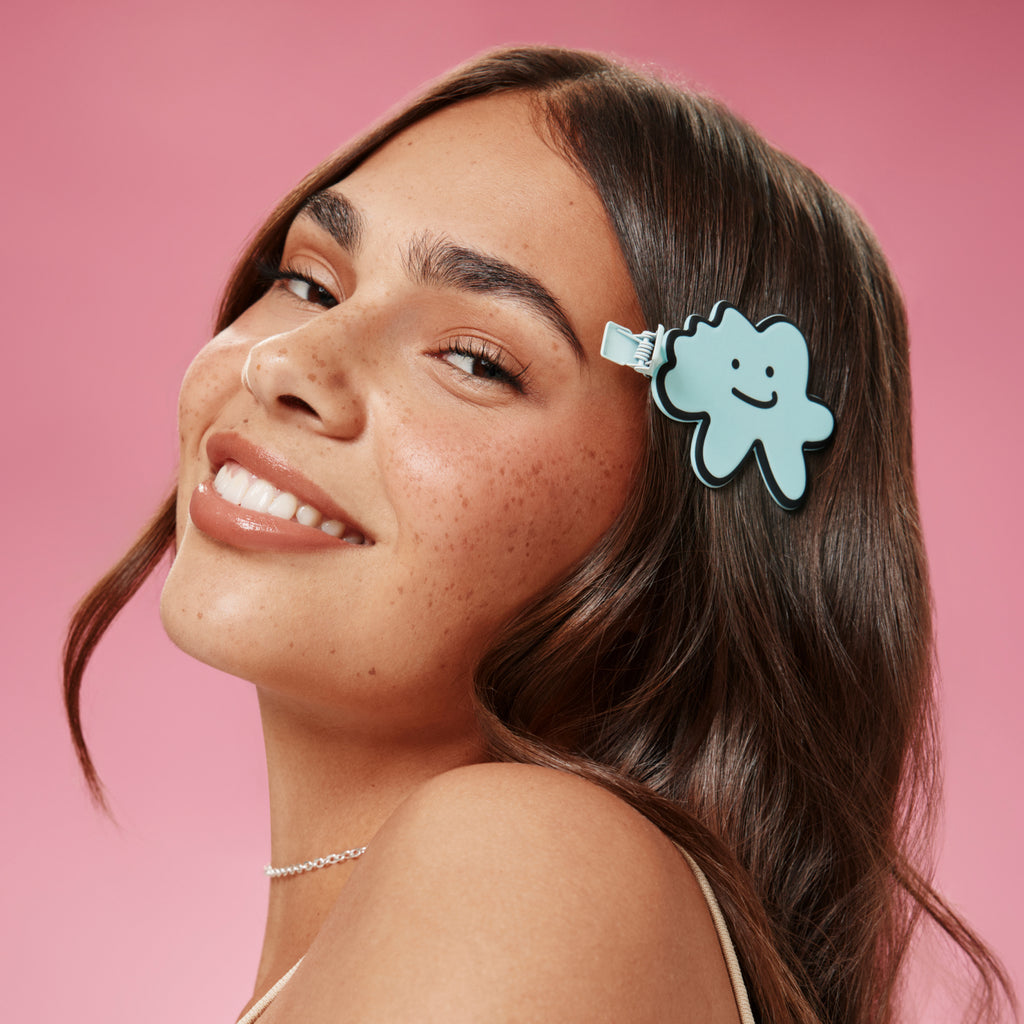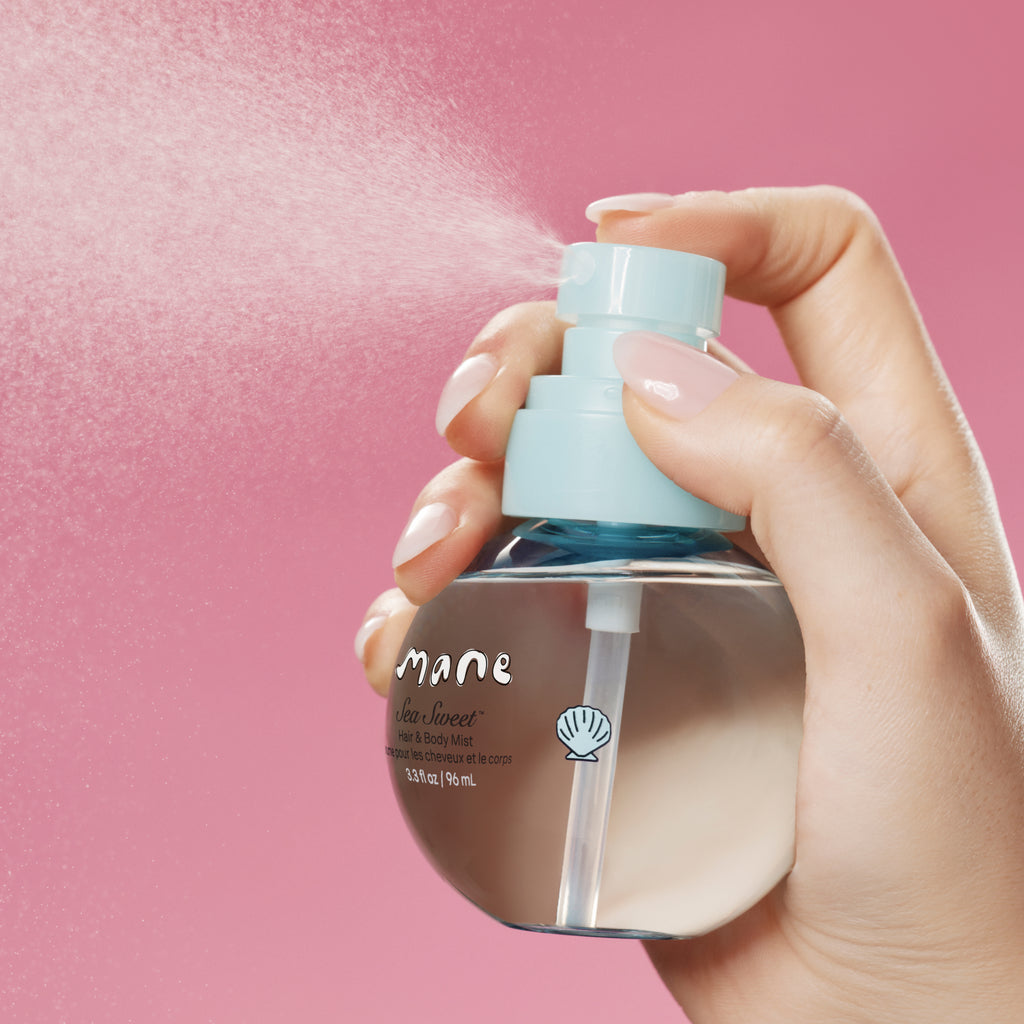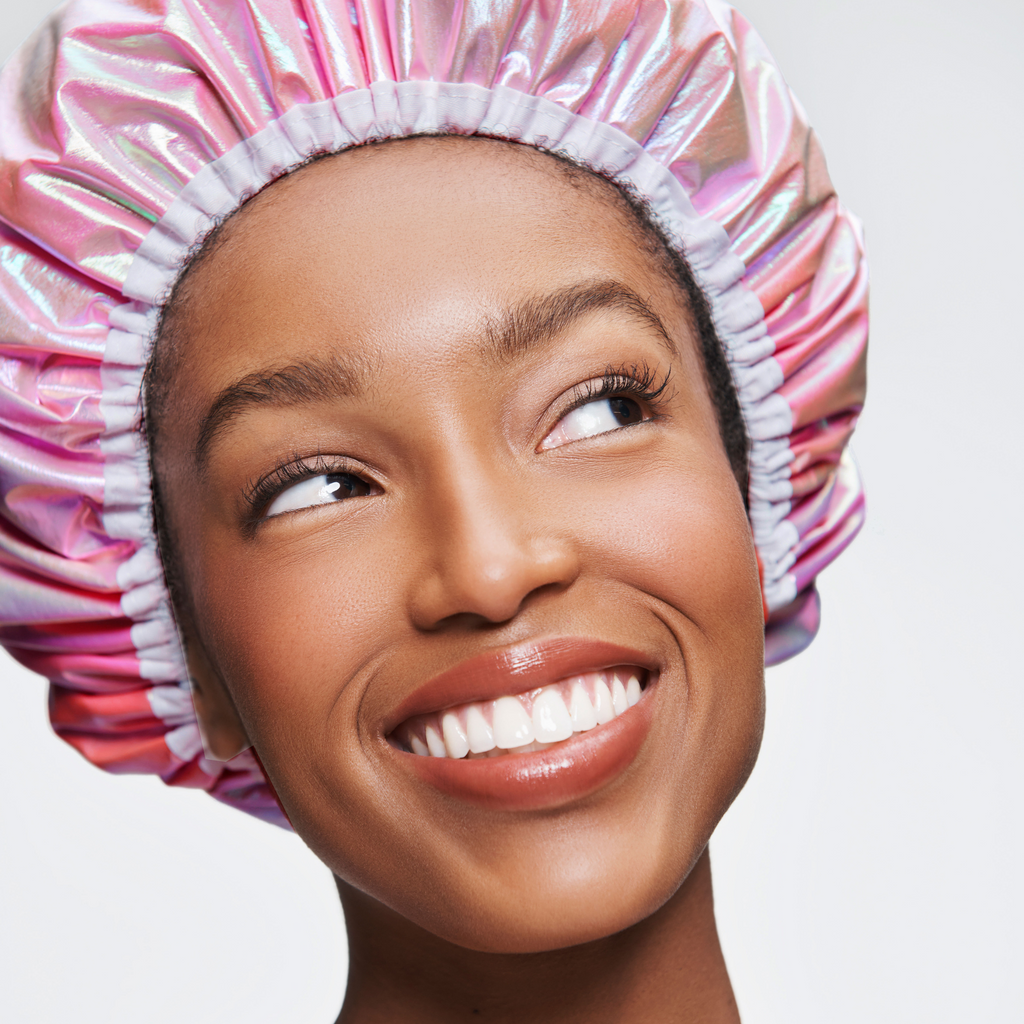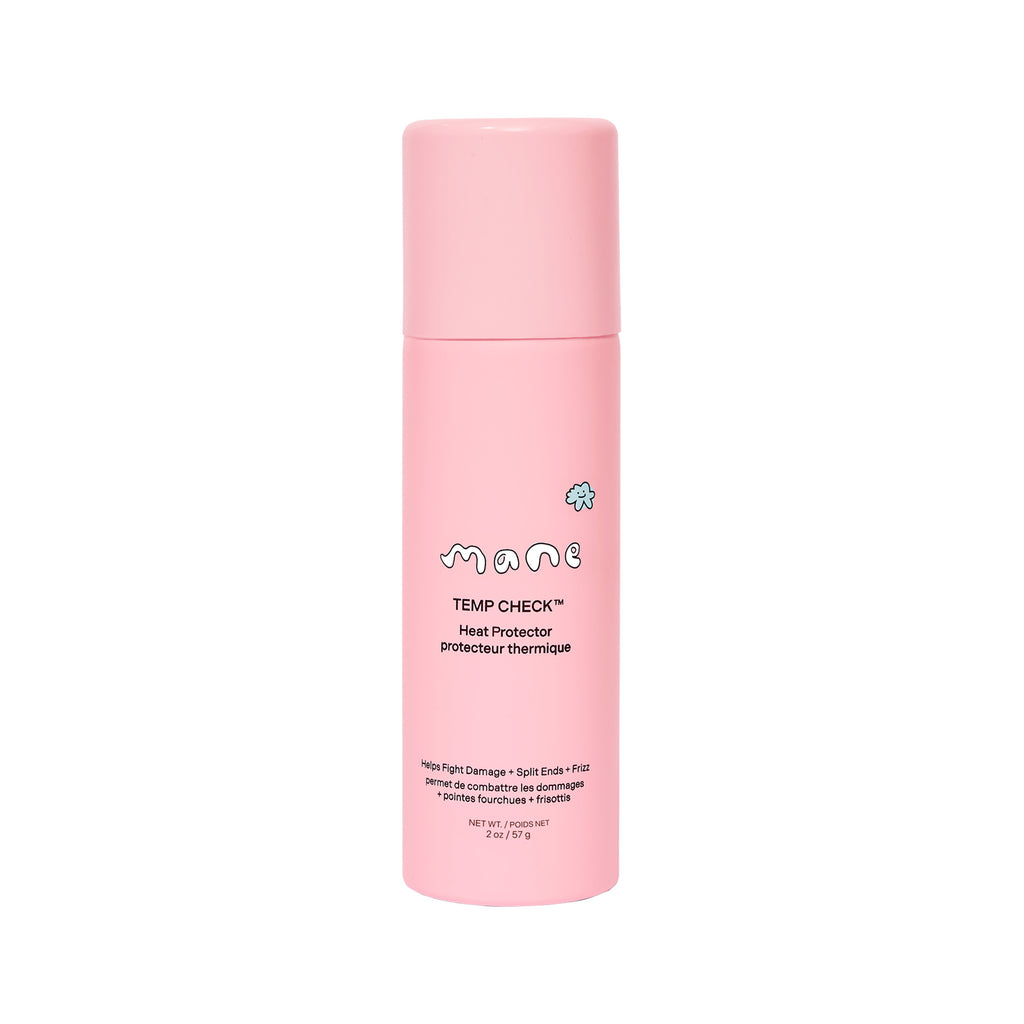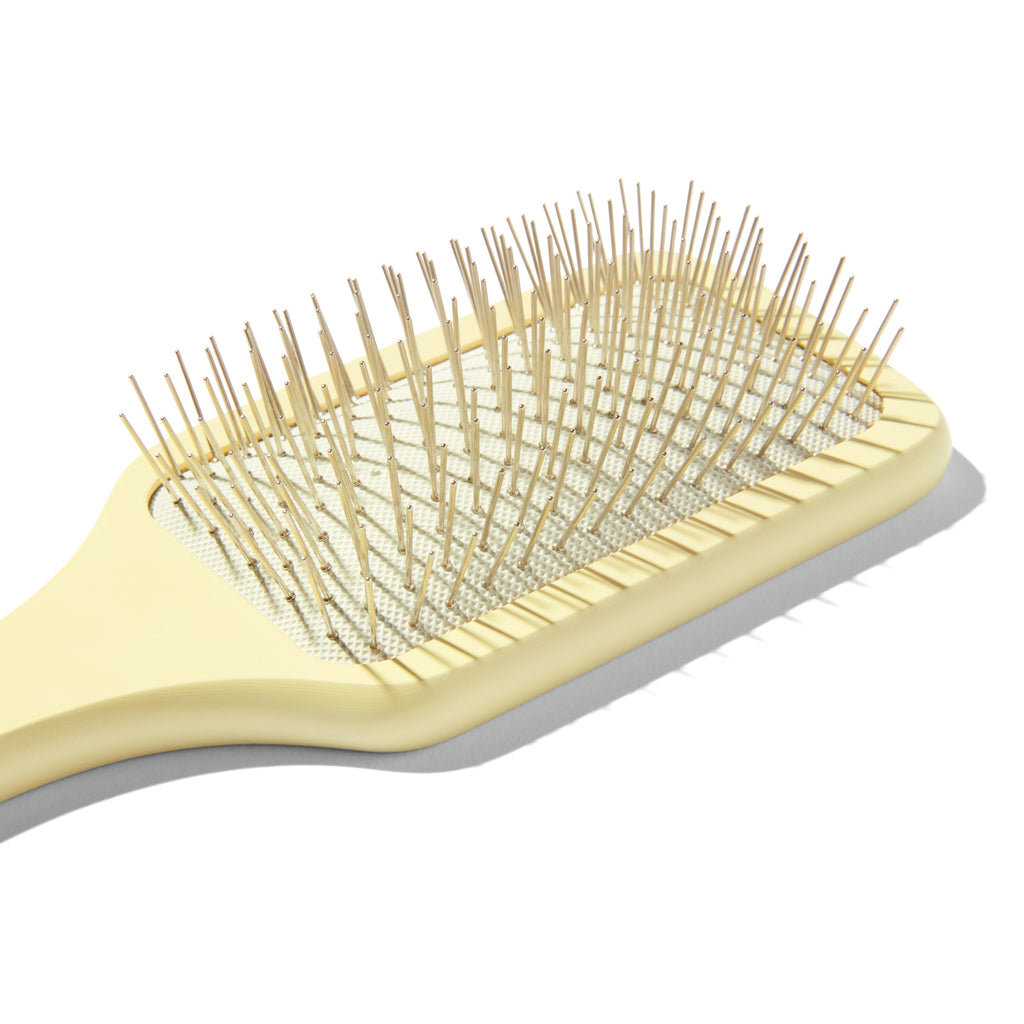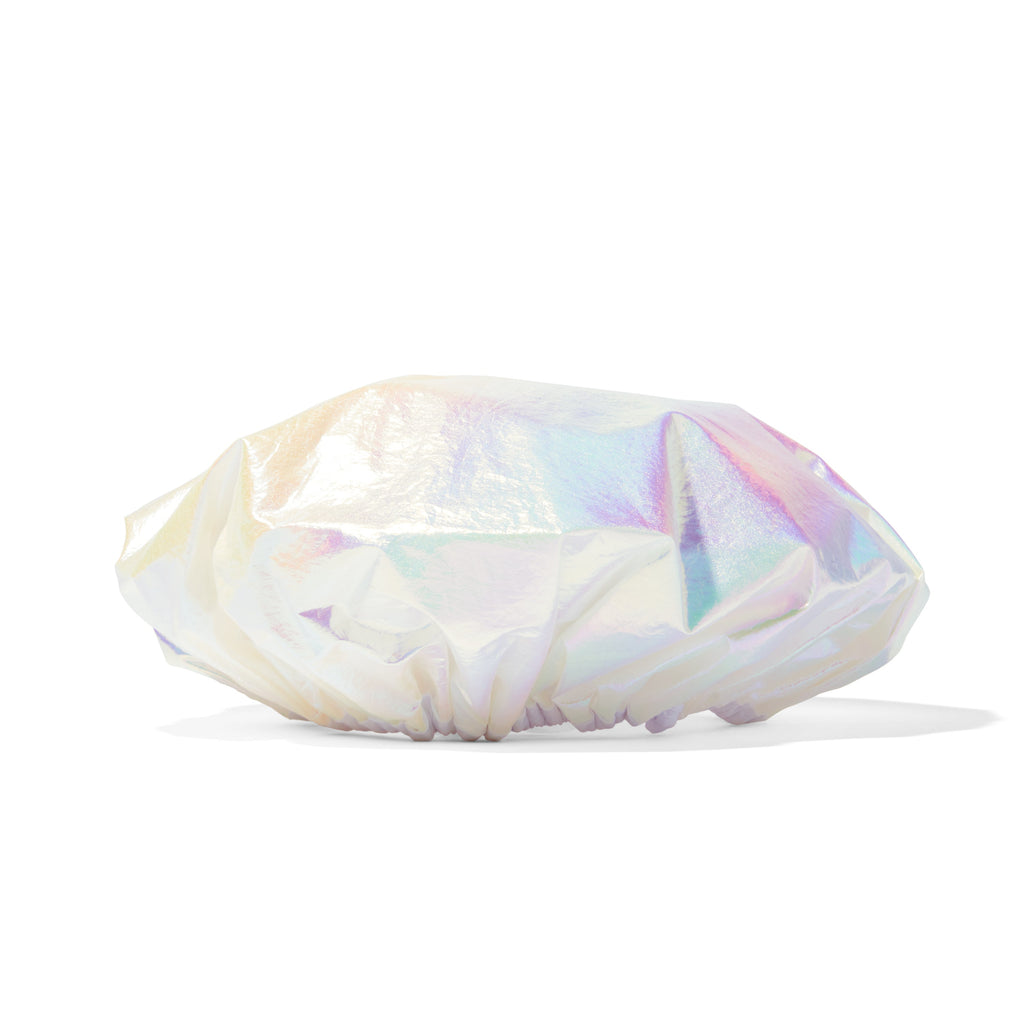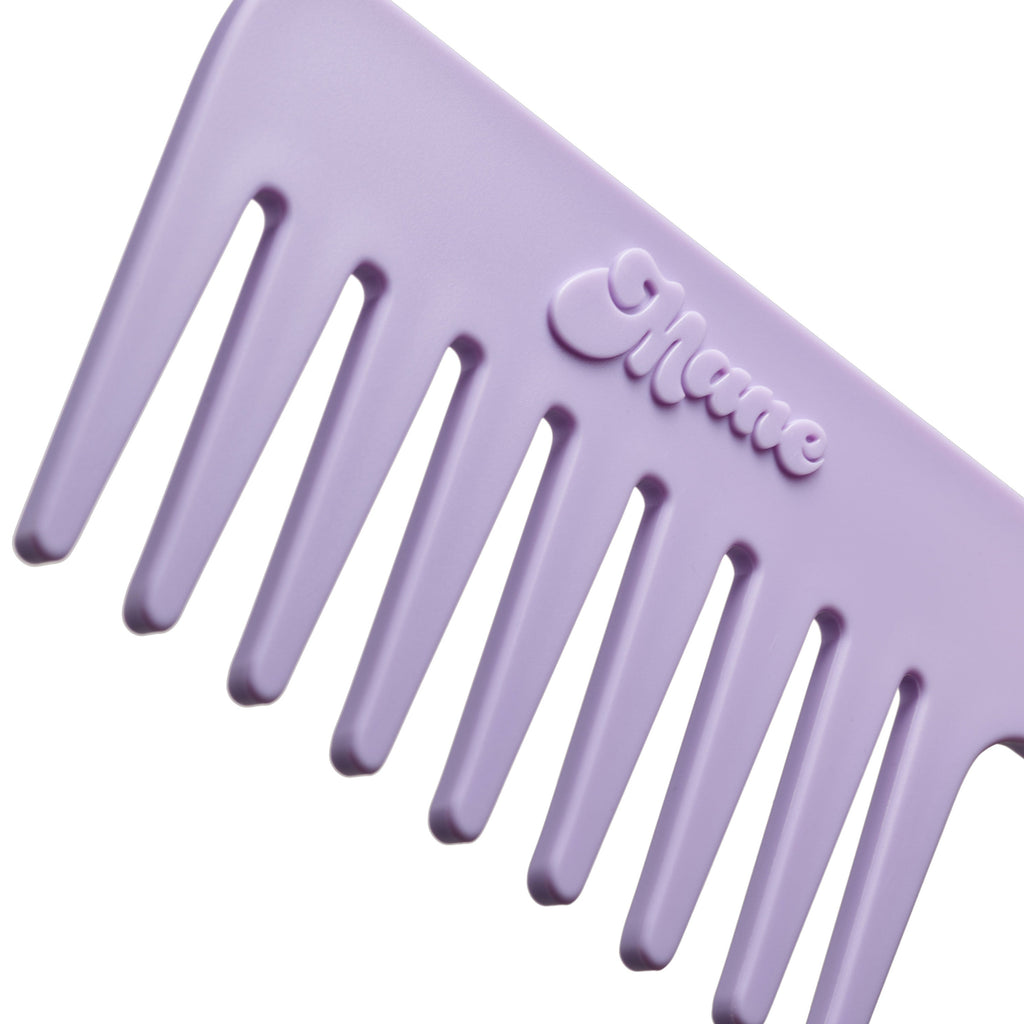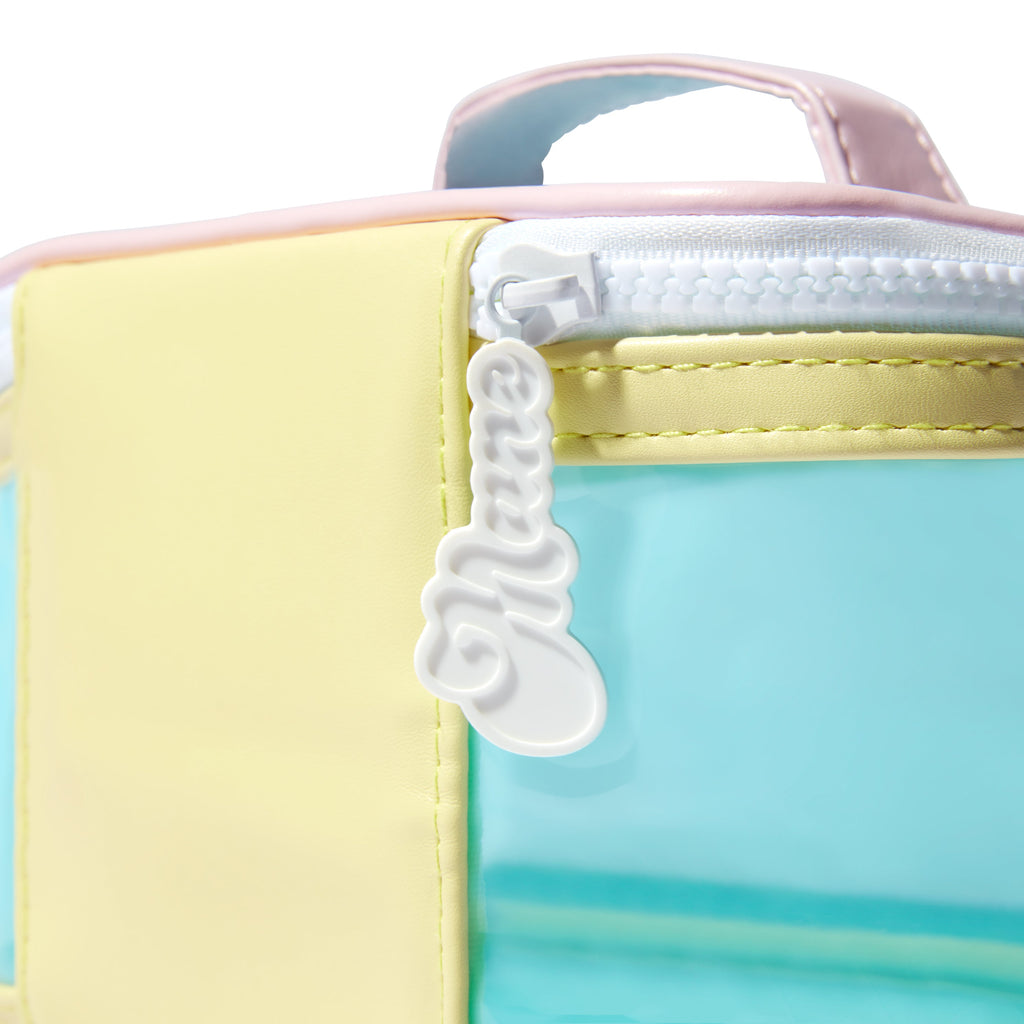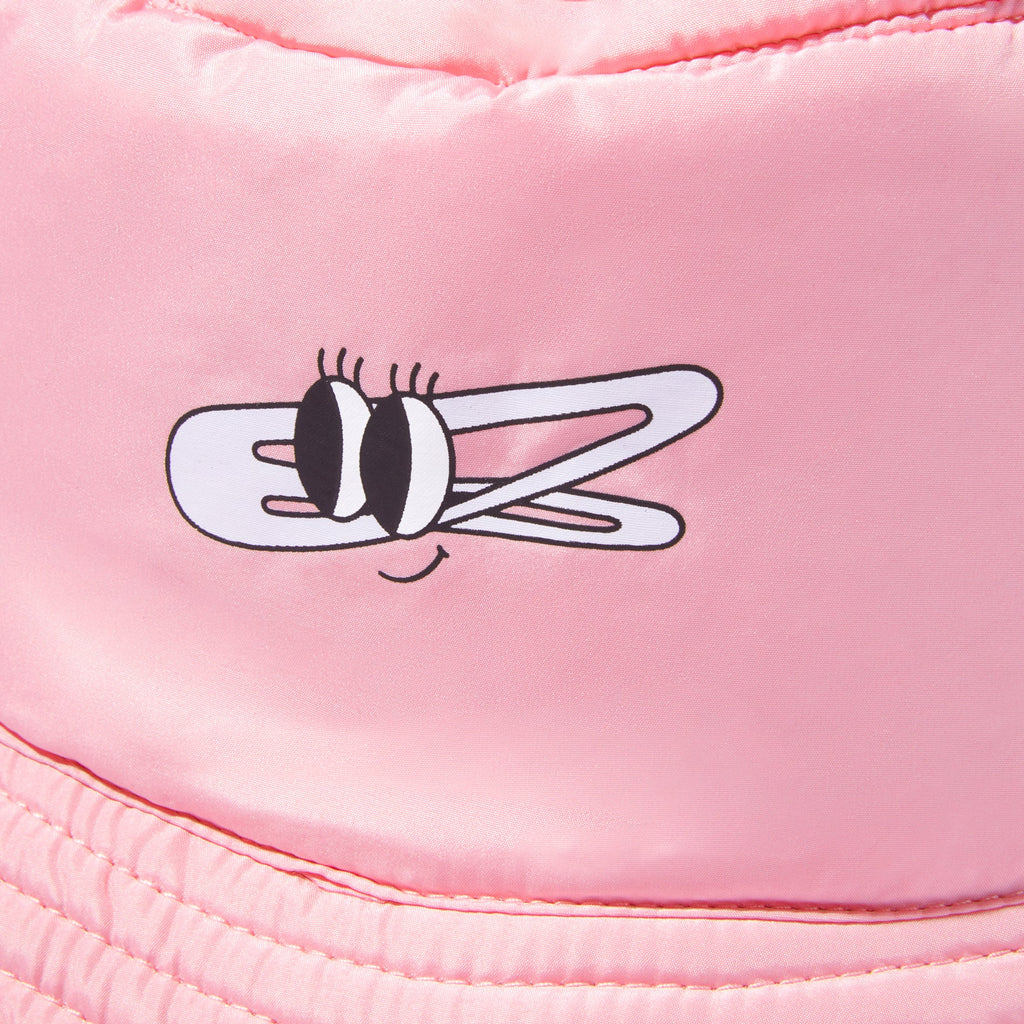Heat gets a bad rap for being damaging, which is why we’ve seen a rise in air-based styling tools. While hot tools can be harmful to your hair, it’s all about knowing how to use them properly. Take your flat iron, for example. You may think that the higher the heat, the better the styling, but you’d be sorely mistaken. When it comes to hair straightener temperatures, you should stick to a temp that’s best suited for your hair type. For those who aren’t quite sure what their hair type is, we’ll help you determine that as well before diving into the best temperature for your straightener. Read on to discover the importance of using the right hair straightener temperature for your hair type, how to determine your hair type, tips for effective straightening, how to maintain your hair’s health, and why Mane’s The Three Way Multi-Use Flat Iron should be your go-to straightener (if it isn’t already).
 (Image Source: Mane)
(Image Source: Mane)
The Importance of Using the Right Straightener Temp
Turning your flat iron to the optimal temperature for your hair type is key to ensure you don’t damage your hair and are able to get the style you want out of the process. Deeper Than Hair CEO Annagjid "Kee" Taylor notes, “Using too low of a temperature may not give you the desired results or cause you to put extra stress on your hair to get it fully straightened. On the other hand, using a temperature that is too high can cause long-term thermal damage. When a flat iron's temperature is too high, it can cause damage to both your hair cuticles and your scalp, while also causing moisture loss. This can lead to breakage, brittle hair, and flakiness on the scalp.”
When you use the right temperature for your hair type, you’re protecting your strands from incurring any unnecessary heat damage and allowing yourself to achieve the perfect style with minimal effort. Speaking of minimal effort, The Three Way Multi-Use Flat Iron utilizes floating plate technology for optimal hair compression that won’t cause the hair to snag as you drag it through. And with four precise heat settings, it’s easy to know the ideal temperature for your hair type:
- 200°F/100°C is best for fine, fragile, or synthetic hair
- 325°F/160°C is best for fine, type 1, or damaged hair
- 360°F/180°C is best for chemically-treated hair, finer type 2, type 3, and natural hair
- 450°F/230°C is best for ultra-thick and type 4 hair
Determining Your Hair Type
Before you turn your flat iron on, you need to know your hair type. Some of you may very well be aware of the type of hair you have, but there may be a handful of you who are unsure—that’s okay, we’re here to help. Hair color specialist Gigi Pogosyan says to look at factors such as “texture, density, porosity, and previous damage to the hair” to determine your hair type.
Taylor has a simple trick for figuring out your hair type. “The best way to determine your hair type is to wash your hair and then let it air-dry without using any products,” she shares. However your hair pattern falls once your hair is fully air-dried will help you better understand your hair type (i.e. if it’s straight, wavy, curly, or coarse).
SexyHair Lead Artist Graham Nation notes that asking if you have fine hair, highlights, color-processed hair, or frizz-prone hair means you should stick to a low temperature. And if you have thick hair that takes you a while to blow-dry and get smooth, set your straightener to a higher temperature.
Temp Settings for Hair Types
Pogosyan reminds us that, “it is important to start with a lower temperature setting and gradually increase it as needed to find the right balance between effectively straightening your hair and minimizing damage.” In any case, these are the temp ranges recommended by the pros for the various hair types:
- Fine hair or thin hair: 250°F to 325°F
- Normal hair or medium hair: 300°F to 375°F
- Thick hair or coarse hair: 325°F to 400°F
Tips for Effective Straightening
Whether you’re using The Three Way Multi-Use Flat Iron or another straightener of choice, the experts share their tips and tricks for getting the most out of your hairstyling sesh.
Start With Dry Hair
Taylor mentions that it’s important to make sure your hair is completely dry because “using a straightener on damp or wet hair can cause a lot of damage.” If you’re in need of an effective blow dryer, the This Totally Blows! Ionic Compact Hair Dryer can reduce drying time and frizz.
Use a Heat Protectant
Always, always, always use a heat protectant before using any hot styling tool. Pogosyan suggests using a cream-based product because it will “coat the hair shaft effectively protecting your hair from further damage and will also smooth out the texture to make you straightening more effective.”
Taylor is a fan of NatureLab. Tokyo’s Perfect Shine Oil Mist because “it’s lightweight and safe for color-treated hair.” She also suggests opting for a moisturizing heat protectant because hot tools cause moisture loss.
Detangle Your Hair Beforehand
Once you have dry hair, coated in a heat protectant, it’s time to detangle. Using a brush like the Ready or Knot Detangling Brush will gently rid your hair of any knots so the flat ironing tool is better able to pass through each strand.
Create Sections
Straightening your hair without sectioning it is a huge no-no, especially for those of you with thicker hair types. You’re creating more work for yourself if you don’t section your hair. To make the process more manageable, use our All Grip, No Slip Sectioning Clips.
Hold Hair Taut
“When you start straightening, hold your hair taut,” says Taylor. “By creating tension, you reduce the number of times you need to pass over the same section of hair.” The less work, the better. While you want to tightly hold each strand you pass through, you don’t need as heavy of a grip on the hair straightener, especially not with The Three Way Multi-Use Flat Iron. The flex plates help control the movement when adding bends or curls so you don’t need to clamp down as tightly.
Secure Your Style
Taylor shares that you shouldn’t “be afraid to hit your hair with a light-hold hairspray to help keep your hair straight all day.” We’d have to agree with the pro here—don’t want all that work to go to waste.
Maintaining Hair Health
If the information above has taught you anything, it should hopefully be that using the right straightener temperature is critical to maintaining your hair’s health. If you need a reminder, Taylor has some words of wisdom.
“While high heat can give seamless, glossy, and straight hair in a matter of minutes, an iron that is too hot can cause damage to overall hair health,” she notes. “For example, using a flat iron that is too hot can irreparably damage your curl pattern. Temperatures that are too high can leave your scalp dry and flaky. The clamping and pulling motion used with a flat iron at a temperature too high can strip your hair cuticles, causing dry, brittle, and weak hair.”
Of course, even in following all the necessary precautions when heat styling (using a heat protectant spray, choosing the right temperature, limiting heat exposure, investing in a high-quality flat iron, etc.), heat damage can still occur. We’re human, it happens. If your hair feels dry or brittle after straightening it, Taylor suggests using a hair mask. “This is a great way to re-nourish the hair after putting stress on it,” she says.
Additionally, while you may want to reach for the flat iron as often as possible, the experts suggest minimizing heat exposure as much as possible. And don’t forget to get a trim regularly to get rid of split ends.
Need some additional tips for straightening curly hair? Here is how to go from curly to stick straight, according to the pros.
Gigi Pogosyan is a hair color specialist, Olaplex advocate, and the owner of Balayage By Gigi.
Graham Nation is a celebrity hairstylist and SexyHair Lead Artist.
 FREE SHIPPING ON ORDERS $98+
FREE SHIPPING ON ORDERS $98+





